For the On Record album covering the 2024 Baltic Dance Platform, Springback Magazine editor Sanjoy Roy crafted three-sentence reflections on each performance – one sentence for each of the three Baltic countries. The outcome was an array of snappy, vivid insights that captured the essence of each show without getting bogged down in details.
When it came to Moving Balkans, finding a similarly symbolic format proved trickier. There are twelve Balkan countries: twelve-sentence reflections felt too long to deliver the sharp focus I wanted, while twelve words felt too slight to say anything meaningful. Then I realised that, as the festival unfolded across the three cities of Ljubljana, Rijeka, and Zagreb, it was only fitting to borrow the three-sentence formula. Here goes!
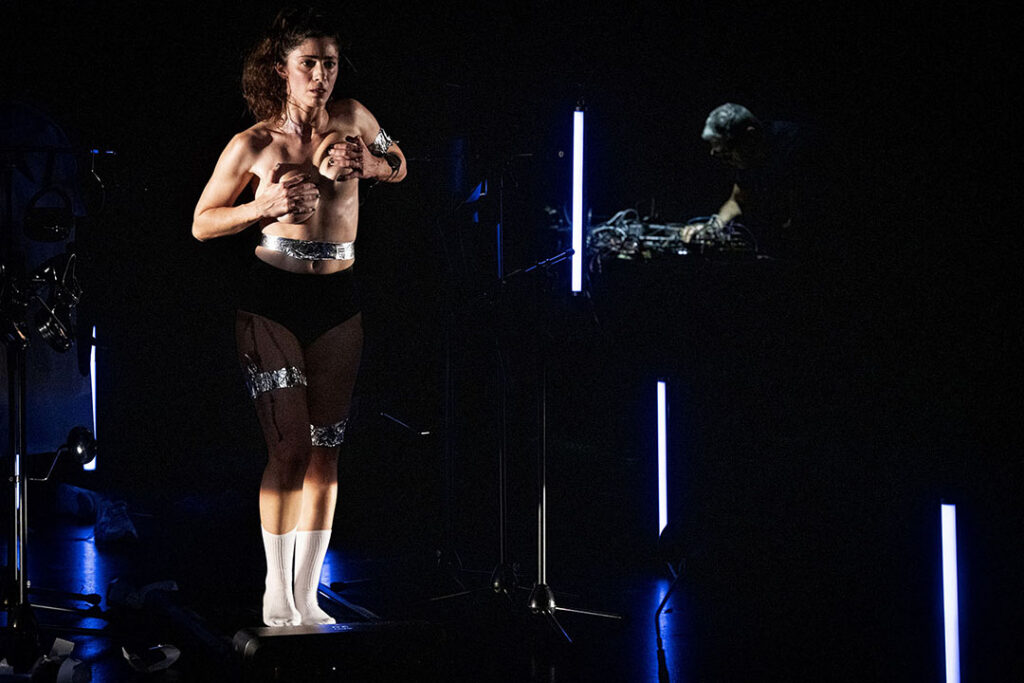
Runway – Christiana Kosari (GR)
At the start, Kosari is already marching resolutely on a treadmill, surrounded by dentist-like mirrors that reflect her from all sides. As her pace quickens, she clutches anxiously at her chest, contorts her mouth, and awkwardly layers on self-care accoutrements – face masks, eye patches, foil strips that leave her looking like an oven-ready chicken – while an airport-style announcer warns against smoking and chocolate. The scrutiny she’s under and the anxiety it provokes is eerily familiar, yet the deranged figure she becomes by the end delivers a biting lesson: maybe we shouldn’t act on every demand the world makes of our bodies.
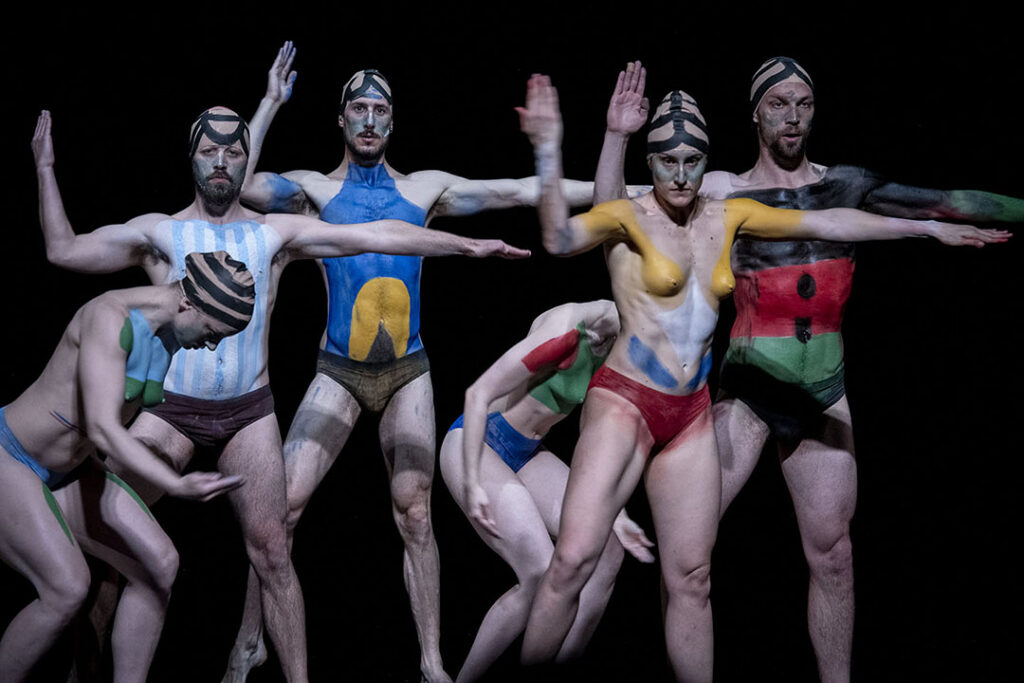
Masterwork for Six Dancers – Emese Cuhorka & Csaba Molnár (HU)
Slovenian company En-Knap – largely nude, initially wearing snug caps to conceal their hair, skin painted playfully in primary colours evoking Bauhaus minimalism – capture childlike joy and the power of imagination. They pull everything out of the metaphorical toy-box: wooden clogs stamped rhythmically across the stage in tight formations; ketchup packets that explode in dramatic death scenes; yoga mats wrapped around their heads like hats and hips like ball gowns. Not all of their antics are so innocent, however, as sensual sighs and shouts, thrusting hips and nipple tickles hint at another type of mischief.
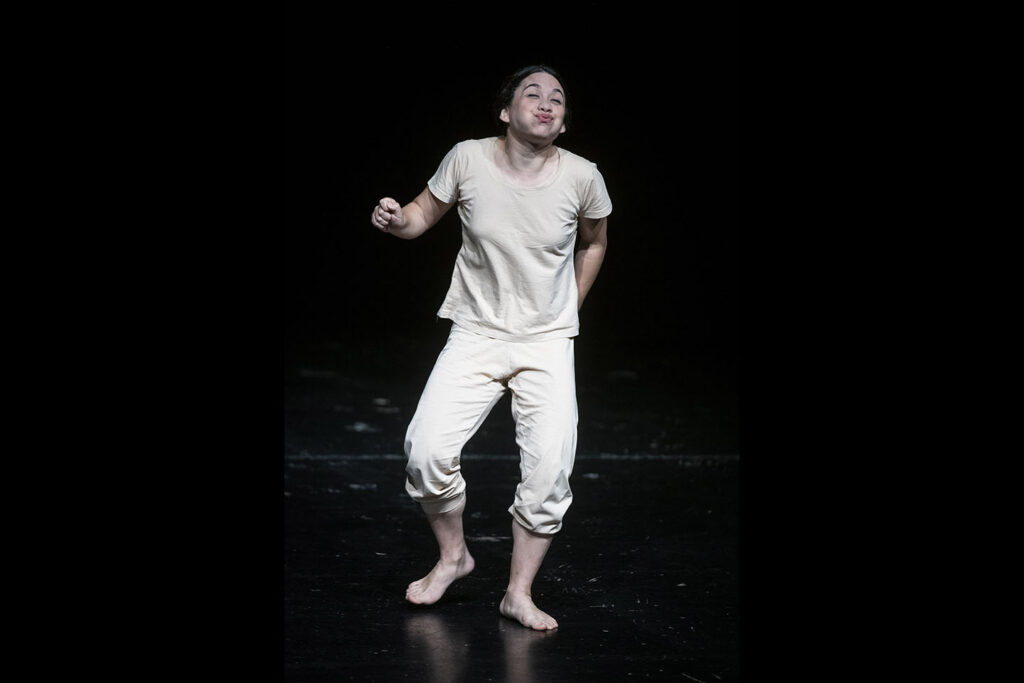
GONG – Filiz Bozkuș Al (TR)
Crouched on the floor, Filiz Bozkuş Al ripples her body towards an upright position like a blossoming flower, or slowly awakening foetus. Over the course of the work she traces the journey of life, with all the joys, obstacles, and emotional shifts that come with each stage, yet it’s her masterful embodiment of infantile behaviour that truly captivates. High-pitched squeaks and coos, rolling wrists and ankles, and wide-eyed wonder – face as expressive as a manga cartoon – make it seem she’s experiencing her body and the world for the very first time, blissfully unaware of the screaming, shaking and limb-flinging she’ll endure just minutes later.
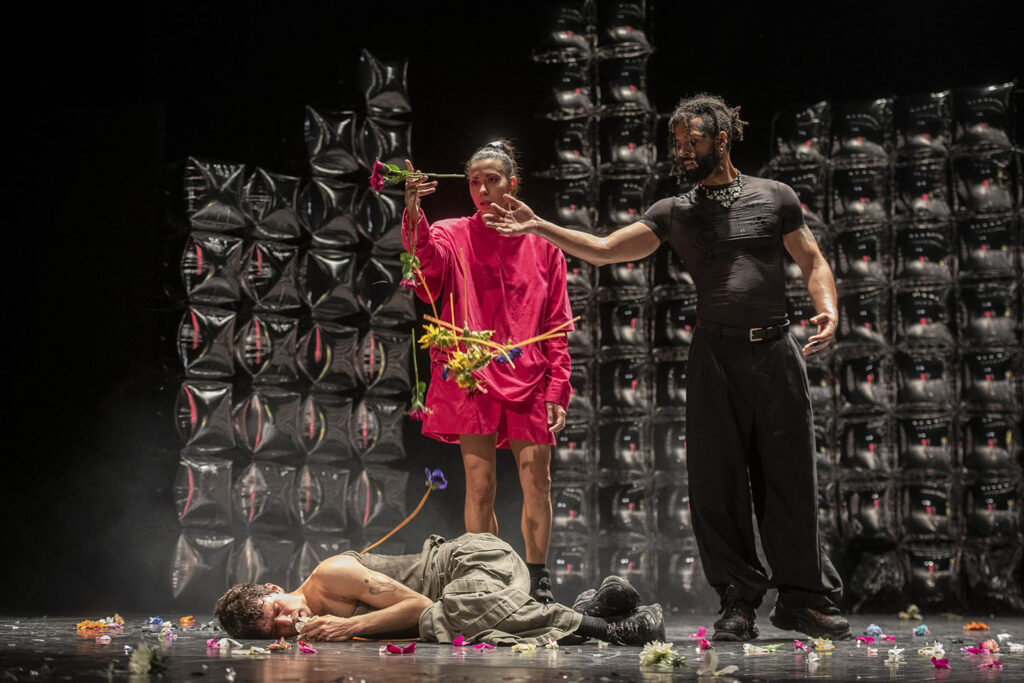
The House of Trouble – Patricia Apergi (GR)
Confident exteriors don’t always reveal inner certainty; at least, that’s my main takeaway from Patricia Apergi’s The House of Trouble. Her seven performers ooze cool as they krump, vogue and strut across the stage in a colourful mix of baggy sportswear, face-concealing balaclavas, and bold jewellery, their sleek figures mirrored in hundreds of metallic balloons lining the space. Yet when they try to speak into a dangling microphone, their voices falter, and their curated exteriors – which become increasingly surreal with the additions of hoop skirts and Madonna-esque triangle bras – end up feeling like smokescreens for internal turmoil.
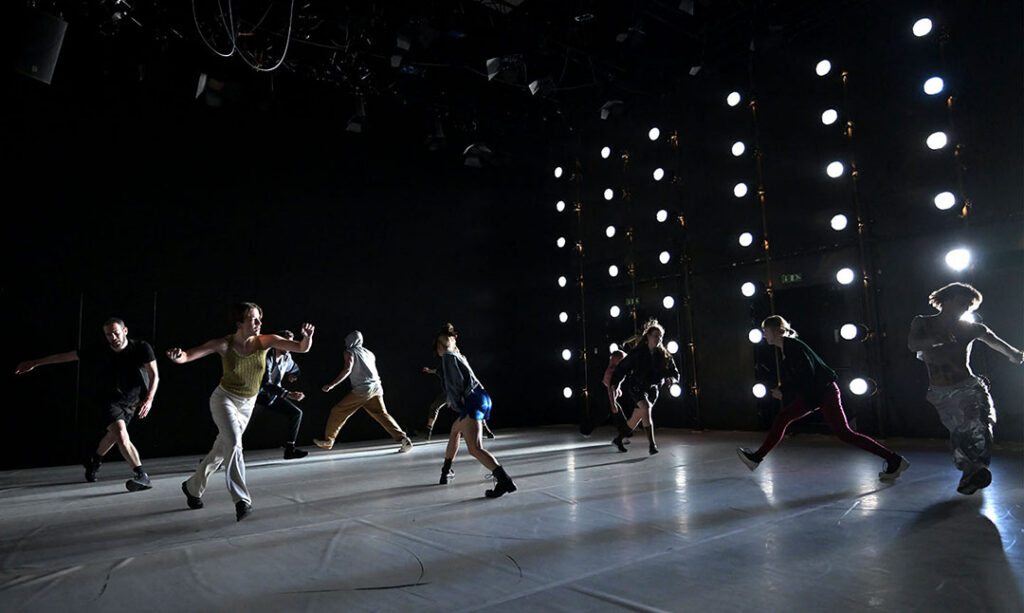
Agenda – Simone Aughterlong (CH) & Saša Božić (HR)
A dirty techno beat pulses beneath ten dancers in glittery mesh tops, leather jackets, metallic trousers and miniskirts as they weave around each other in a repeated stepping pattern. Peppered with cheeky hip rolls, foot hops, limb pops, and smiles, this is arresting and varied enough to make an entire piece, yet it’s broken as the dancers snap out of their collective trance, splintering off on their own surreal, sexual or potty-mouthed paths. The barrage of fragmented scenes leaves me longing for the coherence and simplicity of the opening sequence – a yearning that feels achingly familiar in an age saturated by the chaos of the internet.
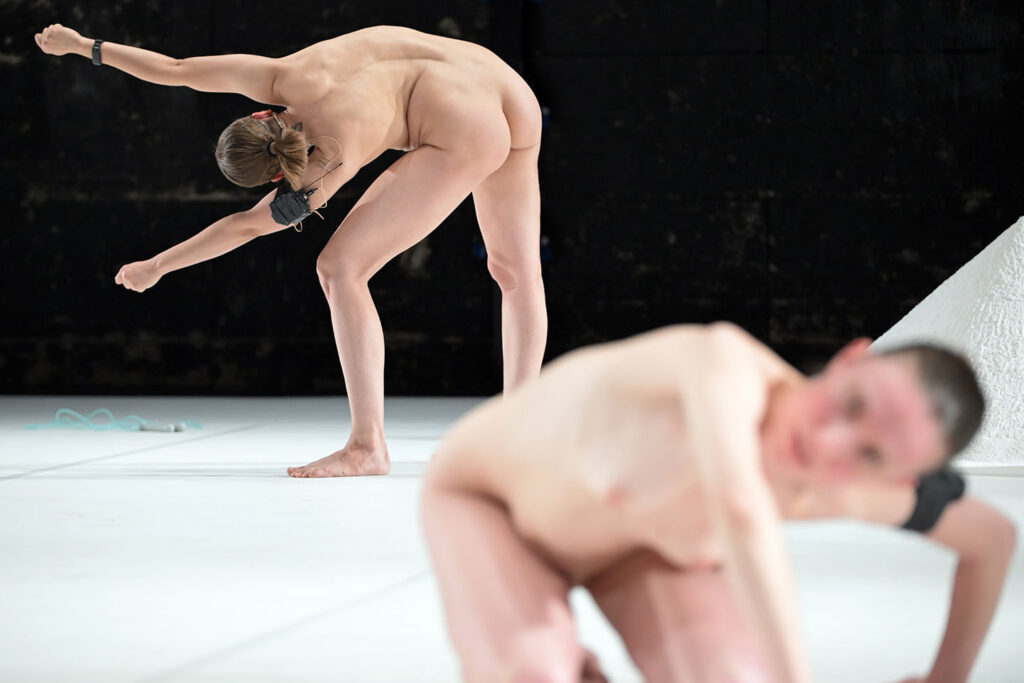
BLOT – Body Line of Thought – Simona Deaconescu (RO) & Vanessa Goodman (CA)
Salt pours from the ceiling, representing the amount found in the sweat of three people. Two nude performers skip repeatedly with ropes, checking their heart rates on sports watches and verbally comparing the lengths of their body parts and internal organs to geographical locations. One asks, “My body is covered in bacteria, is it really naked?”, offering no answer – yet her detached tone implies that a heightened awareness of the unseen cohabitants in the human body is neither comforting nor celebratory.
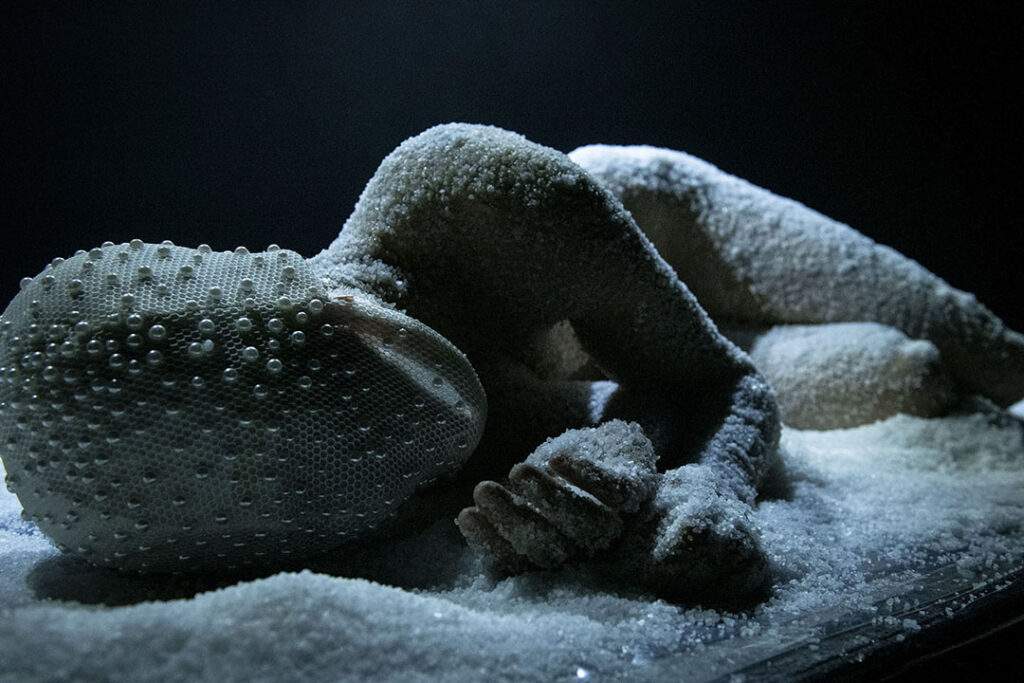
Saline Nebula – Stanislav Rumenov Genadiev & Violeta Georgieva Vitanova (BG)
Is it snow or salt that clings to the performer’s body? By the end of
Saline Nebula, many audience members walk onstage to inspect the glistening powder a nude body has slithered and rippled across during the show, before transitioning to another table coated in slick, iridescent slime. Alone under a spotlight, the performer resembles a panicked scientific specimen attempting to orient themselves in an unfamiliar environment – and despite their lizard-like motions and alienesque mask, it’s hard not to feel a flicker of empathy.
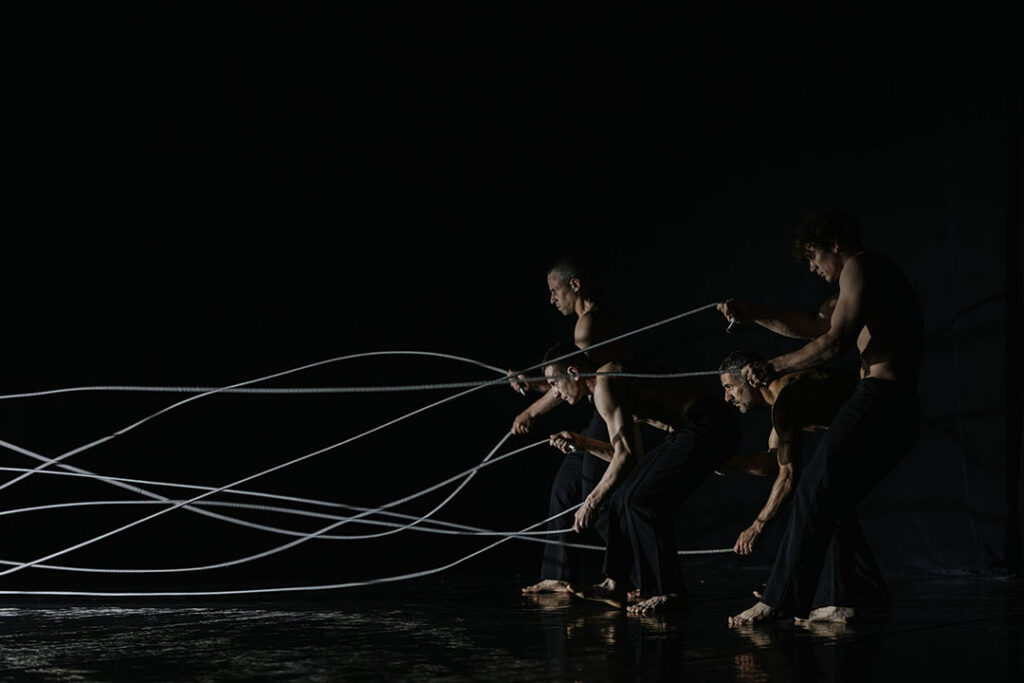
Silence – Linda Kapetanea & Jozef Fruček (GR)
“Silence” might suggest peace and quiet yet there’s no shortage of noise here: one dancer in military uniform speaks in increasingly angry tones about a traumatic childhood memory before four performers thwack long ropes into a thunderous symphony and a rippling wave. Large group sections depict physical manipulation – grabbing, dodging, and ducking under each other – and one dancer is contorted into complex configurations on what looks like an interrogation table. Maybe there’s something here about control, and the dichotomy between being silenced and being made to speak when you’d rather not – something that feels increasingly relevant in today’s turbulent world.
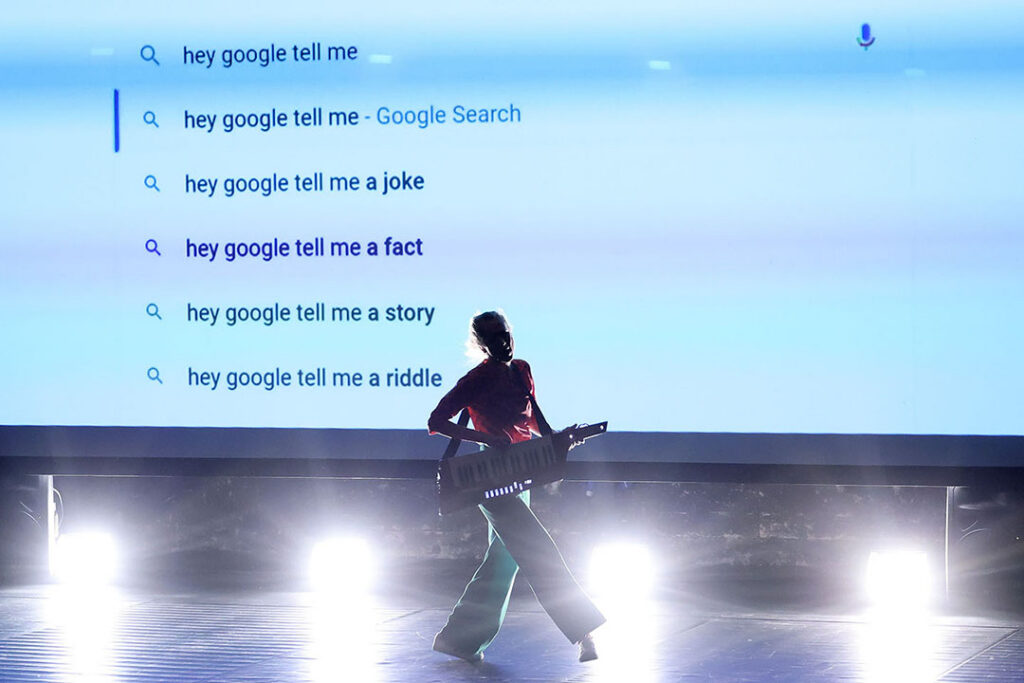
SCREENAGERS (Vol.2) – Barbara Matijević (HR) & Giuseppe Chico (IT)
Mobile phones are normally banned in the theatre, but not in Barbara Matijević’s Screenagers (Vol.2): she invites us to join her WiFi network, upload photos, and battle each other using pixelated avatars reminiscent of early internet chat rooms, all of which is projected on the back wall. We can even submit lyrics to inform the nihilistic yet darkly comic, catchy songs about our doomed world that she plays on her keytar. These musical musings take precedence over choreographed movement, but then again, who will need physicality when we all relocate to the metaverse?
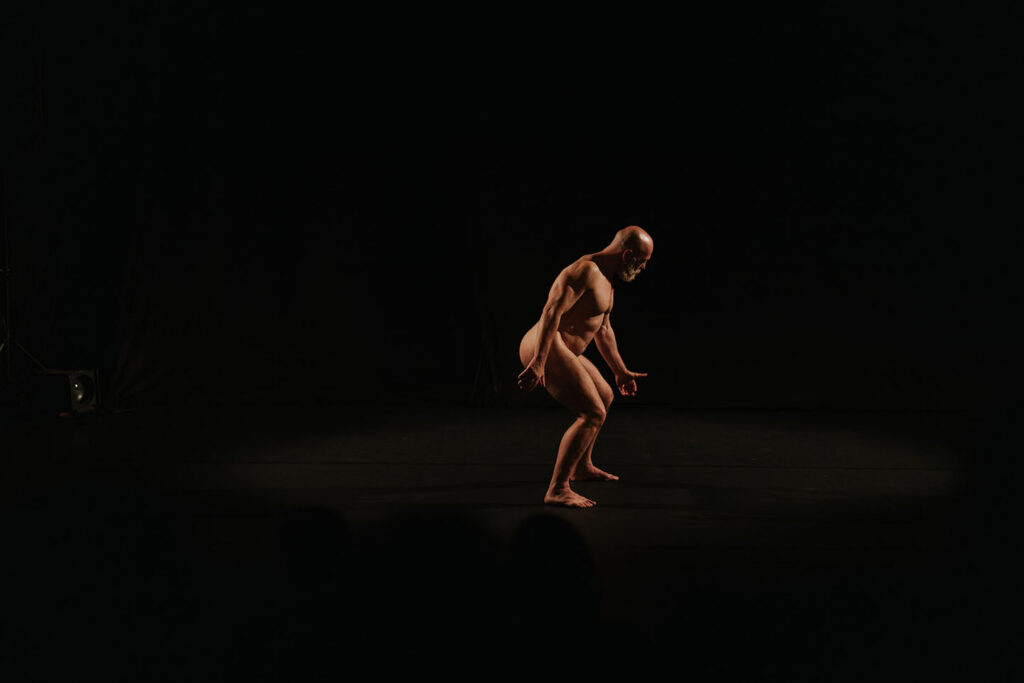
DILF – Marko Milić (RS)
In DILF, low lighting is used to soporific effect, framing the piece as a dreamlike haze of fragmented images. The nude solo performer morphs between poses that evoke the solemn stillness of Greco-Roman sculpture, yet a computer-like voiceover describing sexual fears and fantasies – many of which contradict each other – hints at the conflicted inner world behind his stoic facade. As a result, his slow hip gyrations, genital-framing gestures, and simulated masturbation take on new meanings: isn’t every act, sexual or otherwise, just a product of the desires, doubts, and traumas that have come before it?



